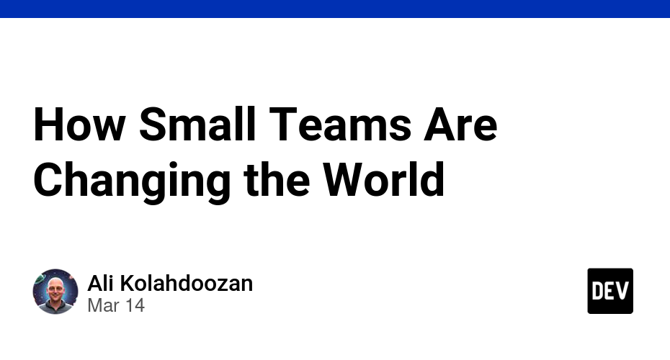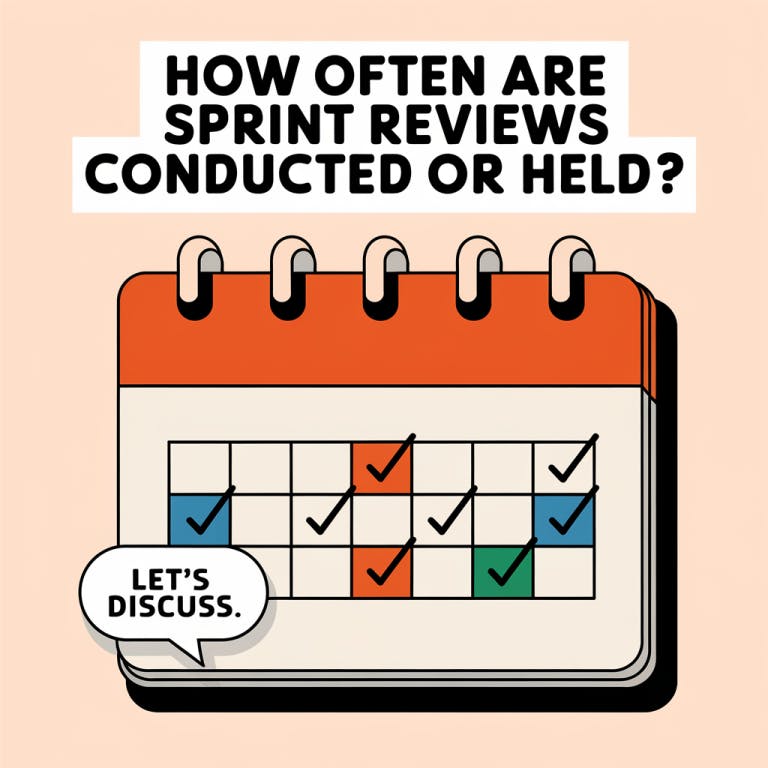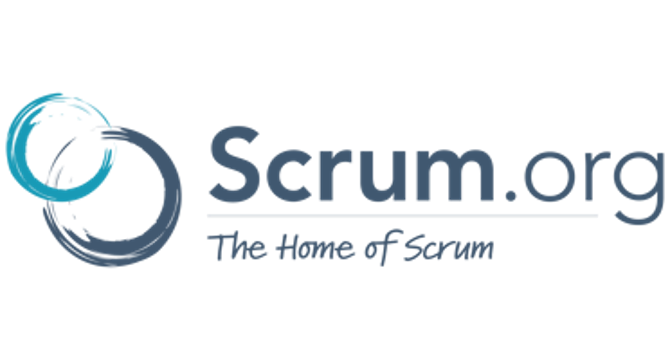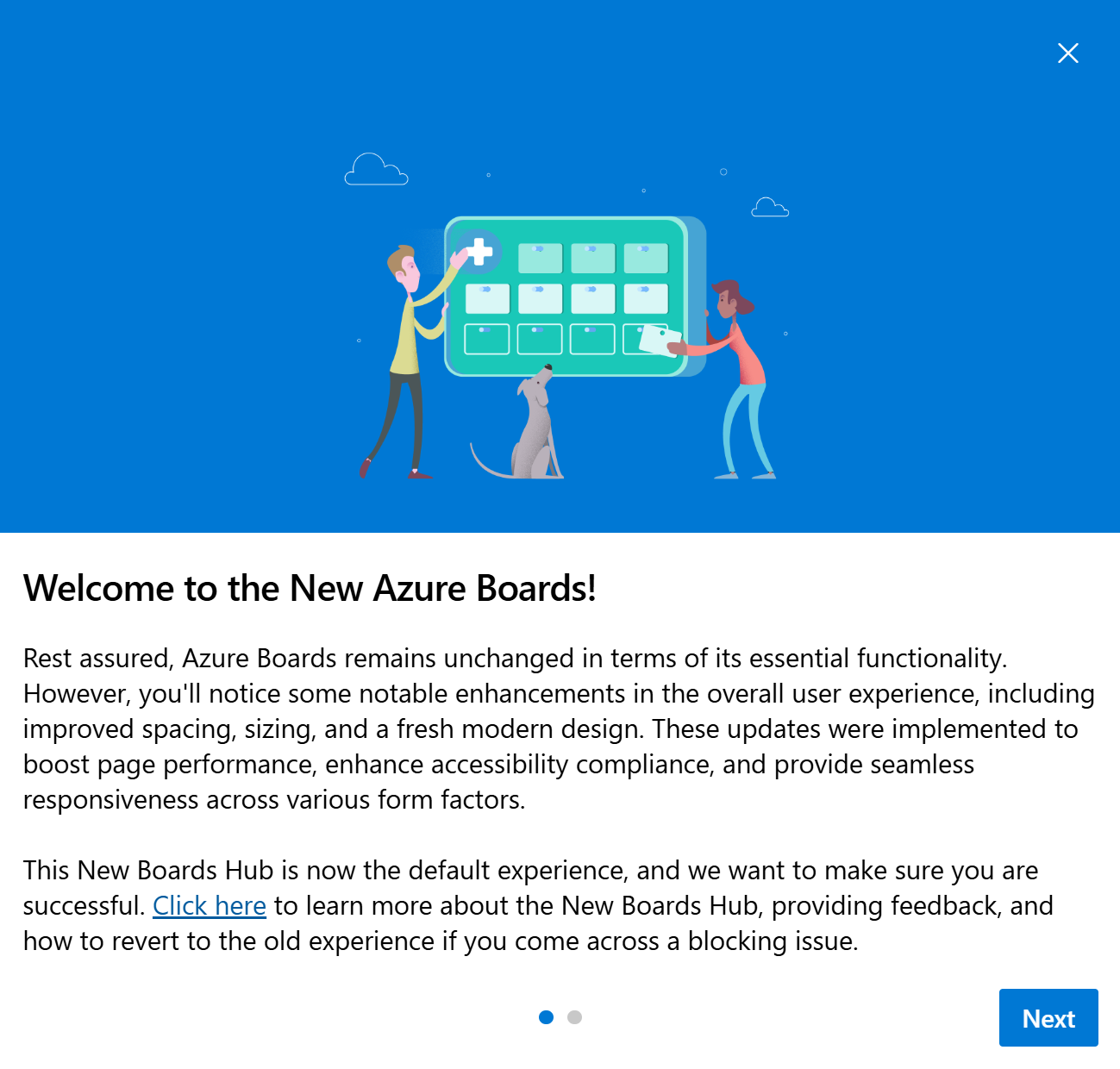Agile Methodology News
Scrum-Master-Toolbox
17

Global Agile Summit Preview: Mastering Your Own Career Success as a Scrum Master with Fred Deichler
- Fred Deichler, a technology leader and the host of the product track at the Global Agile Summit, shares insights on Scrum Master success and personal growth.
- Key elements for success include continuous learning, community involvement, and self-reflection.
- Fred emphasizes owning your learning journey and understanding your learning style for personal and professional growth.
- Community involvement is crucial for refining ideas and gaining new perspectives.
- Self-reflection is vital for evaluating progress, identifying improvement areas, and enhancing effectiveness.
- Fred shares his '6 in 30' story, highlighting the power of setting goals and working towards them.
- LinkedIn is recommended by Fred as a valuable platform for professional networking and knowledge sharing.
- The Global Agile Summit 2025 in Tallinn, Estonia, offers inspiration, practical strategies, and the opportunity to connect with Agile leaders.
- Fred Deichler, with over two decades of experience, emphasizes personal growth alongside professional development in Agile leadership.
- For more updates, visit the Scrum Master Toolbox Podcast website.
Read Full Article
1 Like
Scrum-Master-Toolbox
300

BONUS: Challenging the Agile Status Quo with #NoBacklogs, Allan Kelly
- Allan Kelly challenges the conventional wisdom of maintaining extensive backlogs in Agile environments.
- Instead of lengthy backlogs filled with specific tasks and features, Allan advocates for approaches centered on outcomes and meaningful change.
- Finding the right balance between necessary structure and agile flexibility is crucial for effective delivery.
- Allan addresses concerns about accountability by offering practical approaches to tracking progress without traditional backlogs.
Read Full Article
18 Likes
Scrum-Master-Toolbox
394

Global Agile Summit Preview: Implementing Agile Practices for Data and Analytics Teams with Henrik Reich
- Henrik Reich, Principal Architect at twoday Data & AI Denmark, discusses adapting Agile methodologies for data and analytics teams.
- Data teams increasingly resemble software development, necessitating structured yet flexible approaches.
- Henrik introduces the concept of 'dynamic teams' in consulting environments, addressing fluctuating resources.
- Adapting Agile for data teams involves focusing on people, technology selection, and architecture decisions.
- Implementing CI/CD practices in data projects requires creating 'Accelerators' for effective adoption.
- Henrik's practical tips for Agile adoption include starting small and using Scrum as inspiration.
- Balancing creativity and structure in data work involves leveraging individual strengths and sprint goals.
- Challenges in data teams include 'accidental product owners' and diverse coding backgrounds.
- Henrik emphasizes the importance of clear project ownership and stakeholder engagement.
- Global Agile Summit 2025 offers an opportunity to learn from Agile leaders and break free from Agile fatigue.
Read Full Article
23 Likes
Dev
67

Image Credit: Dev
How Small Teams Are Changing the World 🎯
- Small teams in today's startup ecosystem are making a significant impact and challenging the belief that size equals success.
- Examples of small teams achieving impressive growth include Lovable with $17M ARR in 3 months with 15 employees, Cursor with $100M ARR in 21 months and 20 employees, and Bolt by StackBlitz with $20M ARR in 2 months and 15 employees.
- Small teams succeed due to their agility, speed, efficiency, focus, high-quality talent, and lean business models.
- Founders should prioritize hiring the best employees, leverage automation and AI, stay lean and efficient, and foster a culture of ownership for success.
Read Full Article
4 Likes
Discover more
- Programming News
- Software News
- Web Design
- Devops News
- Open Source News
- Databases
- Cloud News
- Product Management News
- Operating Systems News
- Computer Engineering
- Startup News
- Cryptocurrency News
- Technology News
- Blockchain News
- Data Science News
- AR News
- Apple News
- Cyber Security News
- Leadership News
- Gaming News
- Automobiles News
Scrum
219

Image Credit: Scrum
Why ‘Repeat’ is the most powerful word in Scrum
- The Scrum Guide emphasizes the importance of repetition in the Scrum framework.
- Repetition brings predictability, reduces complexity, and simplifies the Scrum process.
- While the steps in Scrum remain the same, the way the team works evolves over time.
- Scrum is designed for continuous improvement and each event allows for reflection, learning, and change.
Read Full Article
13 Likes
Microsoft
233

Image Credit: Microsoft
Markdown for large text fields (private preview)
- Microsoft Azure DevOps is introducing a private preview for Markdown support in large text fields.
- Users now have the option to opt-in and use the Markdown editor for individual work items and fields.
- The conversion from HTML to Markdown is performed on a best-effort basis, but complex HTML may not be accurately converted.
- The private preview is only available in New Boards and interested organizations can sign up to join the preview.
Read Full Article
14 Likes
Hackernoon
363

Image Credit: Hackernoon
The Best Sprint Review Schedule for Agile Success
- Sprint Reviews are held on the last day of every sprint, typically every two or three weeks.
- Sprint review meetings involve the entire scrum team and key stakeholders to assess completed work and gather feedback.
- Agile principles emphasize iteration and improvement, with sprint reviews facilitating rapid adjustments based on feedback.
- Benefits of sprint reviews include early issue detection, iterative refinement, adaptation to changing priorities, and stakeholder empowerment.
- Stakeholders gain insight and involvement through regular sprint updates that showcase team progress and invite feedback.
- The end-of-sprint timing for sprint reviews allows for quick delivery cycles while ensuring valuable output.
- Adapting sprint lengths and frequencies based on project complexity, team size, and stakeholder availability is encouraged in Agile environments.
- Effective sprint reviews require active participation, open communication, and a focus on progress and improvement.
- Reviewing completed work, gathering stakeholder feedback, and planning improvements for the next sprint are key elements of sprint reviews.
- Consistency and effective agenda creation are highlighted as best practices to ensure successful sprint reviews.
Read Full Article
21 Likes
Scrum-Master-Toolbox
256

Global Agile Summit Preview: Transforming Conflict into Opportunity, Leadership Lessons for Agile Teams with Eagan Rackley
- Eagan Rackley, the track host for the developer track at the Global Agile Summit, shares his leadership journey and insights on transforming conflict into opportunity.
- Leadership is seen as a collaborative space for problem-solving, not control, according to Rackley, who emphasizes creating space for collaboration.
- Empowering teams through permission and alignment helps gain buy-in and transform resistance into engagement and ownership.
- Cross-functional teams can align by establishing shared purpose, desired outcomes, and respecting different perspectives.
- Conflict is viewed as valuable information that provides clarity and highlights areas needing attention, promoting problem-solving together.
- Effective influence comes from building trust first, not demonstrating knowledge, as emphasized by Rackley in leading without authority.
- Resources recommended for deepening leadership skills include books like 'Management 3.0' and 'Agile Retrospectives,' and the 'Change by Attraction' podcast.
- The Global Agile Summit offers a transformative environment where perspective shifts can happen, inspiring real-world Agile success stories.
- Global Agile Summit 2025 in Tallinn, Estonia, from May 18th - 20th, 2025, will provide practical strategies for impact and encourage becoming a Pragmatic Innovator.
- Eagan Rackley, a seasoned software engineer and Agile leader, excels in building collaborative teams, driving innovation, and transforming conflict into opportunity.
Read Full Article
15 Likes
Scrum
152

Image Credit: Scrum
AQAL - A framework for Agile Leaders
- When undergoing an Agile transformation, leadership mindset shift is crucial for its success.
- Ken Wilber's AQAL model focuses on holistic leadership and organizational management.
- The AQAL model consists of All Quadrants, All Levels, All Lines, All States, and All Types.
- The model helps leaders address individual intentions, behaviors, collective values, and organizational structures.
- Leaders need to develop self-awareness, emotional intelligence, and foster a culture of psychological safety.
- AQAL promotes systemic thinking, offering a deep understanding of individuals and organizational dynamics.
- It enables leaders to identify root causes of challenges and make informed decisions for organizational effectiveness.
- By focusing on values, culture, and behavior, leaders can improve effectiveness and create a positive work environment.
- AQAL model empowers agile leaders to approach leadership integrally and drive organizational agility at all levels.
- It emphasizes the importance of being agile in thoughts and actions rather than just doing Agile practices.
Read Full Article
9 Likes
Medium
341

Image Credit: Medium
Agile Meets Design Thinking: Blending Frameworks for Innovation
- Agile is a methodology that promotes flexibility, collaboration, and iterative development, widely used in software development and beyond.
- Design Thinking is a problem-solving approach that focuses on empathy, ideation, and prototyping to create innovative solutions.
- Agile and Design Thinking can be blended to build the right product through user-driven and efficient innovation.
- By integrating Design Thinking with Agile, organizations can bridge the gap between creativity and execution, creating user-focused solutions.
Read Full Article
20 Likes
Scrum
301

Image Credit: Scrum
AI and Humans: The Ultimate Collaboration
- AI is a powerful collaborator with humans, particularly in fields where accuracy and speed matter, such as healthcare diagnostics.
- Human experts like Dr. Mehta train AI systems like MediAI to improve accuracy in diagnosing diseases from medical scans.
- The collaboration involves AI analyzing data quickly while human oversight ensures decisions are accurate and patients receive proper care.
- While AI speeds up disease detection, human expertise is essential for refining AI models and providing necessary oversight.
- AI-human collaboration helps reduce errors in diagnoses, as both parties work together to improve accuracy over time.
- AI allows doctors like Dr. Mehta to focus on high-value tasks, such as discussing treatment plans with patients and mentoring young doctors.
- The future of AI lies in enhancing human expertise and decision-making rather than replacing it, making AI a productivity booster in various industries.
- AI serves as a force multiplier, enabling experts to make faster decisions, focus on higher-value work, and improve accuracy and efficiency.
- To succeed in an AI-powered future, leaders must integrate AI into decision-making, work smarter with AI insights, and leverage human strengths like creativity and leadership.
- Effective collaboration between humans and AI is key to leveraging the strengths of both for mutual benefit across different industries.
Read Full Article
18 Likes
Scrum-Master-Toolbox
130

Global Agile Summit Preview: How to Escape the Agile Doom Loop with Pete Oliver-Krueger and “Agile Mike” Dougherty
- The 'Agile Doom Loop' concept is explored by Pete Oliver-Krueger and Michael 'Agile Mike' Dougherty in a Global Agile Summit preview episode.
- Teams stuck in endless cycles of planning, failure, and rework are identified using the PAGES framework for effective communication and progress.
- Signs of being stuck in the Agile Doom Loop include feeling stagnant and lacking progress in team initiatives.
- Teams failing to understand leadership goals and focusing only on task completion are warned of being trapped in the cycle.
- Personal experiences shared by Pete and Michael shed light on the challenges faced in breaking out of the Agile Doom Loop.
- The PAGES framework helps teams communicate in 'leadership language' and bridge the gap between operational activities and business outcomes.
- Implementing PAGES involves starting with a single successful team to drive organizational change and create trust with leadership.
- Advising to prioritize problem-solving over solutions, Pete recommends focusing on recurring issues impacting team progress.
- Building trust is emphasized by Michael, suggesting teams focus on quick wins and small changes to maintain momentum.
- The Global Agile Summit 2025 in Tallinn aims to provide insights, strategies, and inspiration for Agile success stories.
Read Full Article
7 Likes
Medium
117

Leading AI Projects Without Being the Expert
- Leading AI projects can be challenging when you're not the expert, but there are ways to do it effectively.
- Empower your experts by providing the necessary resources and decision-making autonomy.
- Bridge the gap between technical and business teams to keep everyone aligned.
- Anticipate roadblocks, manage expectations, and focus on incremental wins in ML/AI projects.
Read Full Article
7 Likes
Scrum
216

Image Credit: Scrum
Sprint Reviews: Time Waster or Real Highlight? 6+ Creative Ideas Your Participants Will Love 🚀
- The Sprint Review is a crucial event for agile teams but can often be perceived as boring or ineffective.
- Transforming the Sprint Review can create genuine engagement and excitement within the team.
- Ideas to enhance Sprint Reviews include creating a Marketplace of Ideas, encouraging interaction, and collecting feedback continuously.
- Visualization tools, storytelling, sharing data, and gathering feedback on the review process itself are key elements to improve Sprint Reviews.
- Engage participants actively, use storytelling to convey emotions, leverage data for transparency, and gather feedback to refine the process.
- Make Sprint Reviews events to celebrate successes, gather feedback, and inspire everyone involved.
- Facilitate the Sprint Review effectively using inclusive and energized techniques.
- Encourage active participation, use storytelling to engage emotions, and incorporate data for transparency and trust.
- Continuous improvement is key, gather feedback on the Sprint Review format itself to ensure ongoing value for customers.
- Celebrate successes, gather feedback, and add value to the Sprint Review through creativity and inclusivity.
Read Full Article
12 Likes
Microsoft
90

Image Credit: Microsoft
New Boards Hub Update
- New Boards Hub has become the default experience for all organizations and users.
- 97% of users are staying on New Boards without reverting.
- Old Boards will be disabled for over 50% of organizations in the next two to three months.
- All organizations will be fully moved to New Boards by early May.
Read Full Article
5 Likes
For uninterrupted reading, download the app